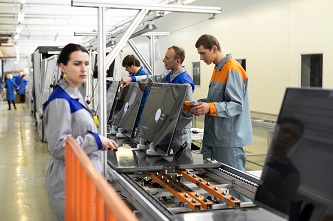Neuromorphic Supercomputer Targets 10 Billion Neurons
SpiNNcloud Systems, based in Germany, is at the forefront of developing a groundbreaking neuromorphic supercomputer that boasts an impressive capacity of up to 10 billion neurons. This cutting-edge technology represents a significant leap forward in the field of artificial intelligence and computational neuroscience.
The SpiNNaker2 system, a key component of a €1 billion European project spanning the past decade, builds upon the pioneering work of Prof Steve Furber, a renowned figure in the tech industry and one of the original architects of ARM. This next-generation supercomputer is designed to support event-driven neural networks, deep neural networks, and symbolic rule-based AI, setting it apart from other systems currently available in the market.
"We are proud to introduce the largest commercially available hybrid supercomputer that seamlessly integrates event-based properties, distributed deep neural networks, and rule-based engines. The flexibility offered by the ARM cores enables real-time information exchange," explains Hector Gonzalez, co-CEO of SpiNNcloud, in an interview with eeNews Europe.
The initial phase of the project involves the construction of a half-size implementation in Dresden, Germany, featuring up to 5 million neurons. This setup utilizes a custom chip with 152 ARM M4F microcontroller cores, manufactured using the advanced 22nm silicon on insulator FDX process at Global Foundries. The incorporation of adaptive back bias (ABB) technology helps to optimize power consumption, ensuring efficient operation.
Furthermore, the system includes neural network accelerator cores, memory management cores, exponential and logarithmic functions, and two true random number generators (RNG) that leverage thermal noise sampling for stochastic operations. With 48 chips per card, 90 cards per rack, and a total of eight racks, the supercomputer boasts an impressive 5.25 million cores.
By combining synchronous chip-level operations with asynchronous communications between boards and racks, SpiNNcloud's supercomputer offers dynamic voltage and frequency adjustments to meet varying data requirements. This energy-efficient approach, coupled with the system's ability to process data in an event-based manner, sets it apart from traditional GPU architectures.
Looking ahead, SpiNNcloud plans to make the neuromorphic supercomputer available on the cloud, enabling users to leverage multiple AI frameworks simultaneously for applications such as sensor networks and generative AI. The system's versatility has attracted interest from various sectors, including smart cities seeking real-time sensor data processing and researchers exploring drug discovery through parallel networks.
One of the early adopters of SpiNNcloud's technology is Sandia National Laboratory in the US, where Fred Rothganger highlights the system's programmable dynamics, event-based communication, and scalability as key advantages. The University of Manchester, under Prof Steve Furber's leadership, has been instrumental in developing the software stack for the supercomputer, incorporating tools for spiking networks, graph-based DNNs, and symbolic logic.
With its innovative approach to neuromorphic computing and its potential to revolutionize AI applications across various industries, SpiNNcloud Systems is poised to make a significant impact in the field of computational neuroscience and artificial intelligence.












